Interview de Derek Frey
Producteur des films de Tim Burton depuis Charlie et la Chocolaterie, Derek Frey connaît par cœur l’envers du décor. D’assistant sur Mars Attacks! à auteur sur le court-métrage en stop-motion Capitaine Sparky Contre les Soucoupes Volantes, découvrez le parcours atypique de cette personnalité de l’ombre, indispensable au bon déroulement d’un tournage Burtonien :
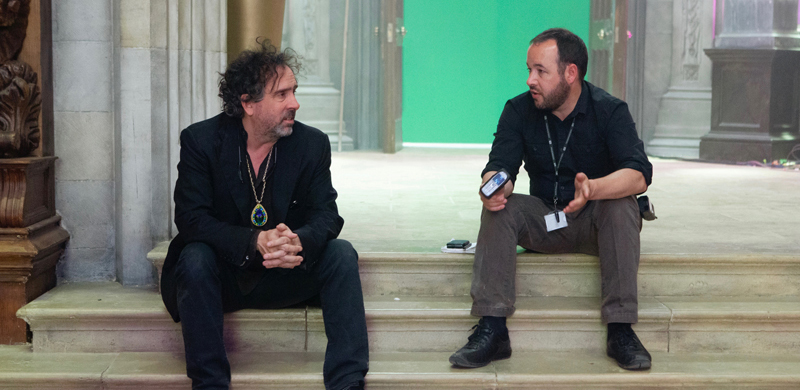
J’ai eu le privilège de collaborer étroitement avec Tim Burton pendant près de 20 ans sur ses projets divers et variés, allant du long-métrage au film d’animation en passant par des clips musicaux, des publications, des expositions et des publicités. J’ai commencé l’aventure en tant qu’assistant personnel sur Mars Attacks! en 1996 puis j’ai gravi les échelons petit à petit en passant coordinateur de production, éditeur, assistant producteur, co-producteur, producteur exécutif pour finir producteur. Voici une liste des projets auxquels j’ai contribué :
- Mars Attacks! (1996): Assistant du réalisateur
- Sleepy Hollow (1999): Assistant du réalisateur
- Le Monde de Stainboy (2001): Coordinateur de production
- La Planète des Singes (2001): Assistant du réalisateur
- Big Fish (2003): Assistant du réalisateur
- Charlie et la Chocolaterie (2005): Producteur associé
- Les Noces Funèbres (2005): Producteur associé
- Sweeney Todd (2007): Producteur associé
- L’Art de Tim Burton (2009): Editeur
- Alice au Pays des Merveilles (2010): Producteur associé
- Une Conversation avec Tim Burton & Danny Elfman (2011): Producteur
- Dark Shadows (2012): Producteur associé
- Vampires Kiss/Blood Inside (2012): Réalisateur/Producteur
- Abraham Lincoln: Chasseur de Vampires (2012): Producteur associé
- Frankenweenie (2012): Co-producteur
- Here With Me (2012): Producteur
- Big Eyes (2014): Producteur exécutif
- Miss Peregrine et les Enfants Particuliers (2016): Producteur exécutif
- Dumbo (2019): Producteur
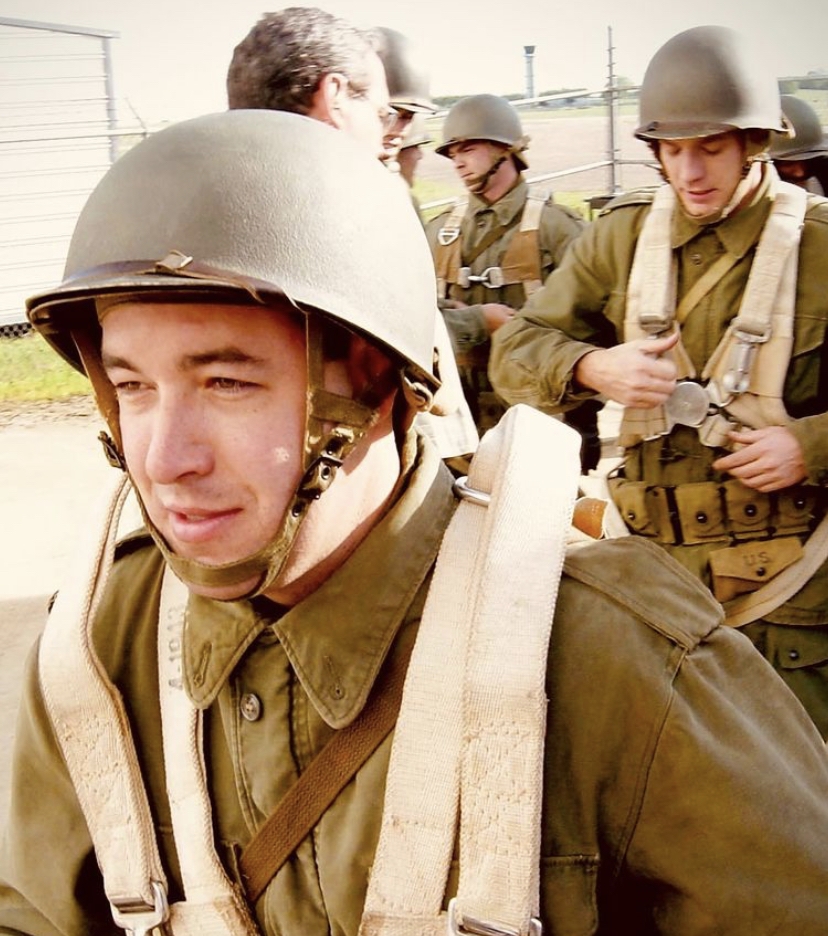
Comment as-tu rencontré Tim Burton?
Quand j’ai commencé à travailler avec Tim Burton sur Mars Attacks!, c’était un rêve devenu réalité. J’ai été diplômé de l’Université de West Chester en Pennsylvanie au printemps 1995 puis j’ai déménagé à Los Angeles pour espérer percer dans l’industrie du cinéma. J’ai eu une bonne expérience sur un sitcom dans les Studios de la Paramount. L’expérience s’est arrêtée lorsque la série n’a pas été renouvelée pour une deuxième saison. J’étais déjà un IMMENSE fan du travail de Tim Burton donc quand j’ai reçu un appel me demandant si j’étais intéressé de passer un entretien pour travailler dans sa société, je suis pratiquement tombé de ma chaise. J’ai commencé à travailler en tant qu’assistant personnel pendant le début du tournage de Mars Attacks!. C’était une expérience incroyable d’être au centre de l’action et de la création d’un film de cette ampleur. J’ai appris énormément en très peu de temps.
Quel est ton rôle dans la production d’un film et comment cela a-t-il évolué, d’assistant à producteur?
Ce qui a commencé comme un poste d’assistant personnel a évolué au fur et à mesure que je prenais des responsabilités et que je faisais mes preuves. J’ai gravi les échelons pendant plusieurs années et sur de nombreux projets, passant d’assistant de production à assistant de l’assistant de Tim, puis assistant de Tim directement et enfin producteur à partir de Charlie et la Chocolaterie. Dès le début, j’ai eu le privilège d’apprendre avec les plus grands producteurs tels que Richard Zanuck, Allison Abbate et Larry Franco. Ils m’ont vraiment appris les ficelles du métier, m’ont donné de grandes responsabilités et surtout m’ont encouragé. Lorsque j’ai commencé mon rôle de producteur, les différents projets où j’étais l’assistant de Tim m’ont beaucoup aidé pour les étapes suivantes, c’était très formateur. Faire partie de l’univers créatif de Tim Burton a été une expérience incroyable. Il favorise un environnement créatif et c’est ce que j’ai toujours recherché et apprécié.
Tim travaille de façon instinctive et organique. Il est animé par les images, les émotions et l’atmosphère. Mon travail en tant que producteur est d’aider à concrétiser sa vision tout en veillant à ce que tous les éléments de la production soient alignés. Chaque film a ses propres challenges, que ce soit de créer des univers entiers (Alice au Pays des Merveilles, Miss Peregrine et les Enfants Particuliers), de travailler en animation image par image (Les Noces Funèbres, Frankenweenie), ou de mélanger de vrais acteurs avec des personnages en images de synthèse (Dumbo).
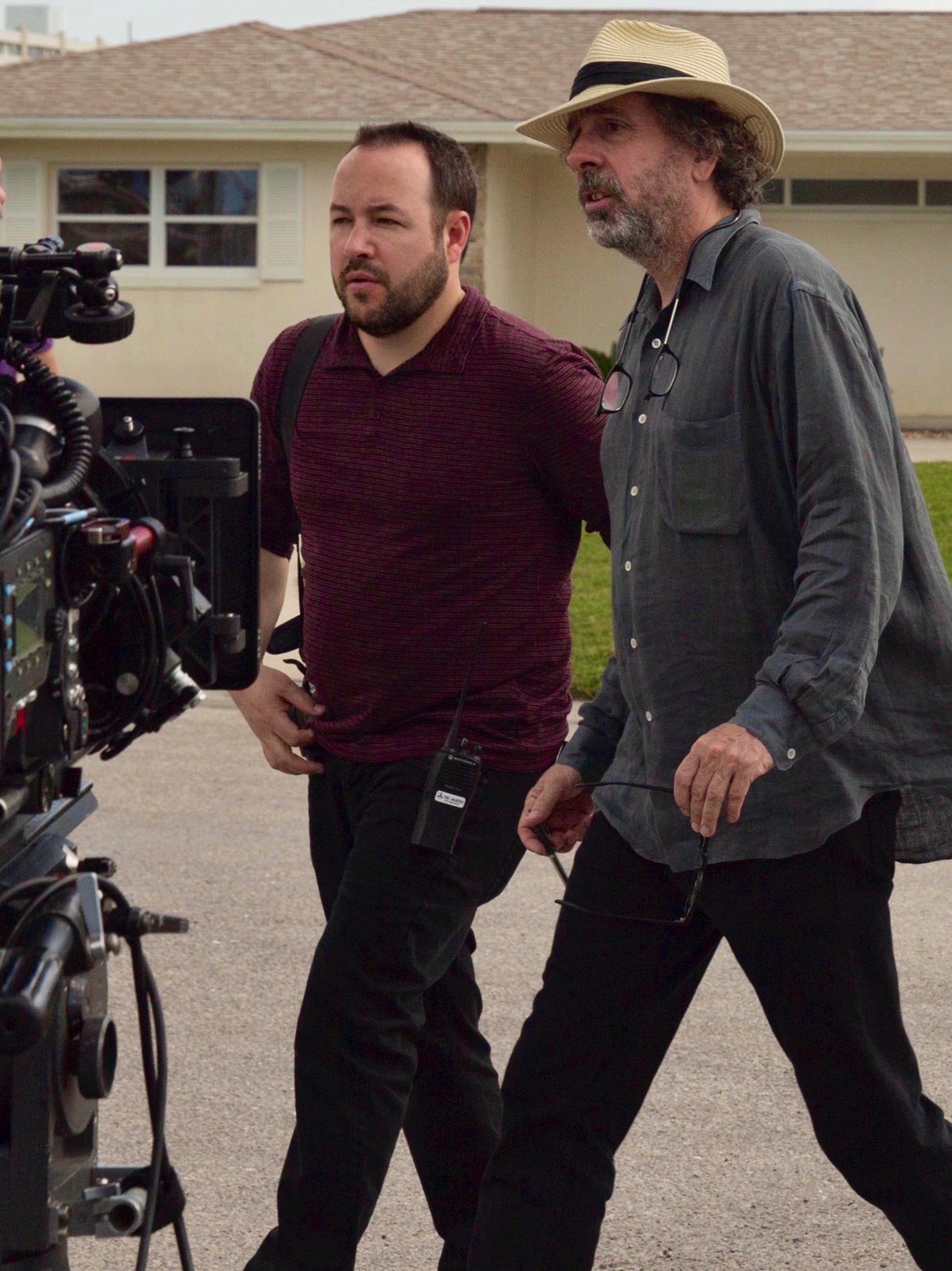
En tant que producteur, dès les premières étapes, je dois superviser l’écriture du script, rassembler les bonnes équipes, budgétiser et travailler en étroite collaboration avec les responsables des différents départements pour être sûr que ce qui a été imaginé puisse être matérialisé devant l’écran. Quand la production est lancée, je suis tous les jours sur le tournage et m’assure que tout se déroule bien, j’aide à résoudre les problèmes et à maintenir l’équilibre entre la créativité et la logistique pour que le film sorte tel qu’il a été imaginé.
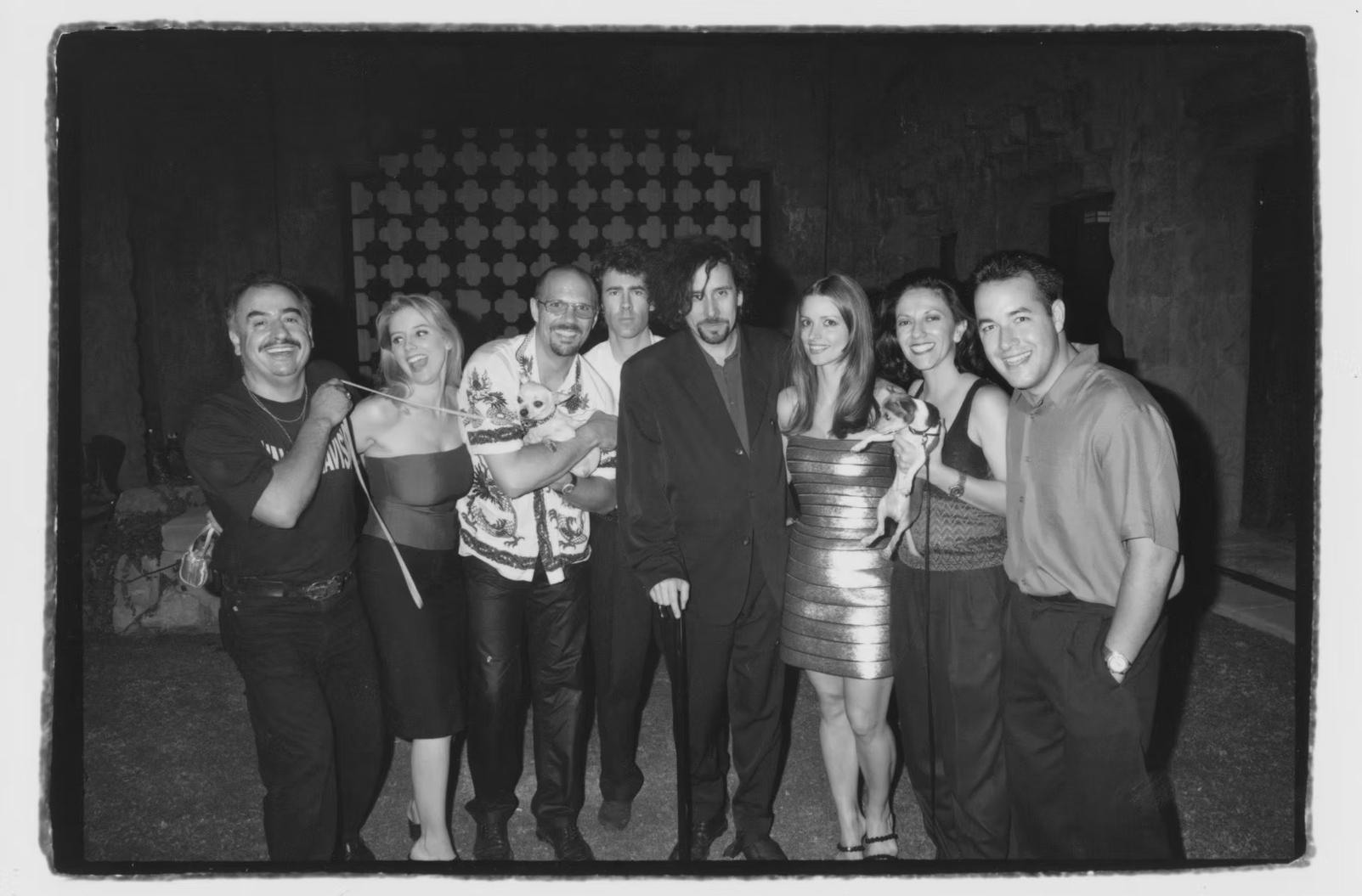
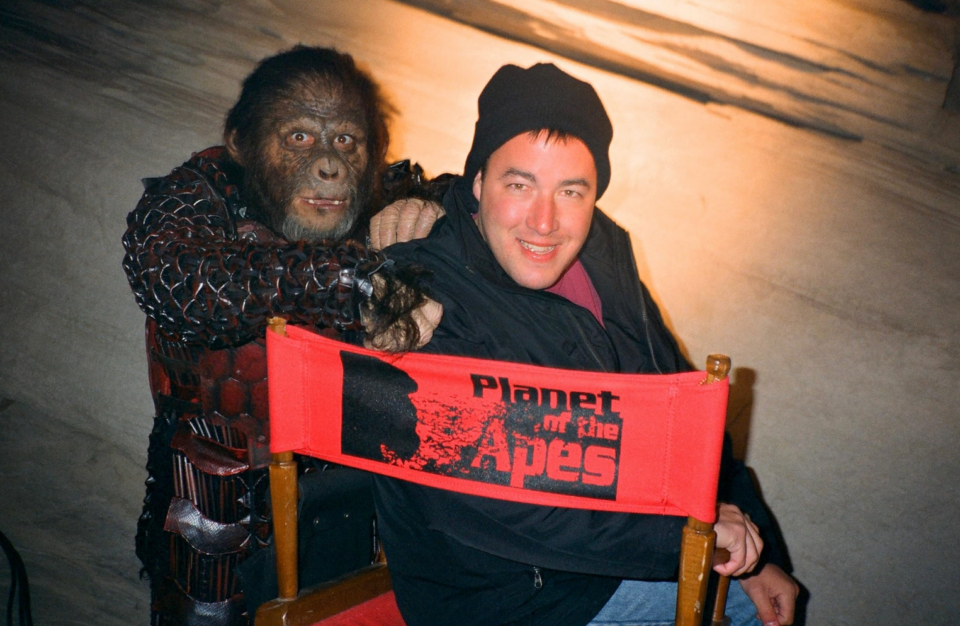
La post-production est une autre phase cruciale où je travaille en collaboration avec Tim, les monteurs, les équipes d’effets spéciaux et les compositeurs pour que tout s’imbrique naturellement. Le but est toujours de rester fidèle à l’essence de ce que voulait créer Tim, tout en restant dans les temps et sans dépasser le budget.
Ce qui aide à faire fonctionner si bien cette collaboration, c’est le fait d’être très proches pendant tant d’années car je comprends sa sensibilité et ses priorités. Il me fait confiance pour m’occuper de la logistique afin qu’il se concentre sur la réalisation. C’est un processus stimulant et enrichissant. Je suis toujours inspiré par sa capacité à repousser les barrières et explorer de nouveaux terrains créatifs à chaque film. Je suis incroyablement chanceux d’avoir commencé ma carrière dans un environnement dont je me sens proche créativement parlant. C’est une combinaison de timing, de persévérance, de travail assidu et d’une immense reconnaissance de sa vision artistique, qui me permet de m’épanouir au sein de son univers créatif.
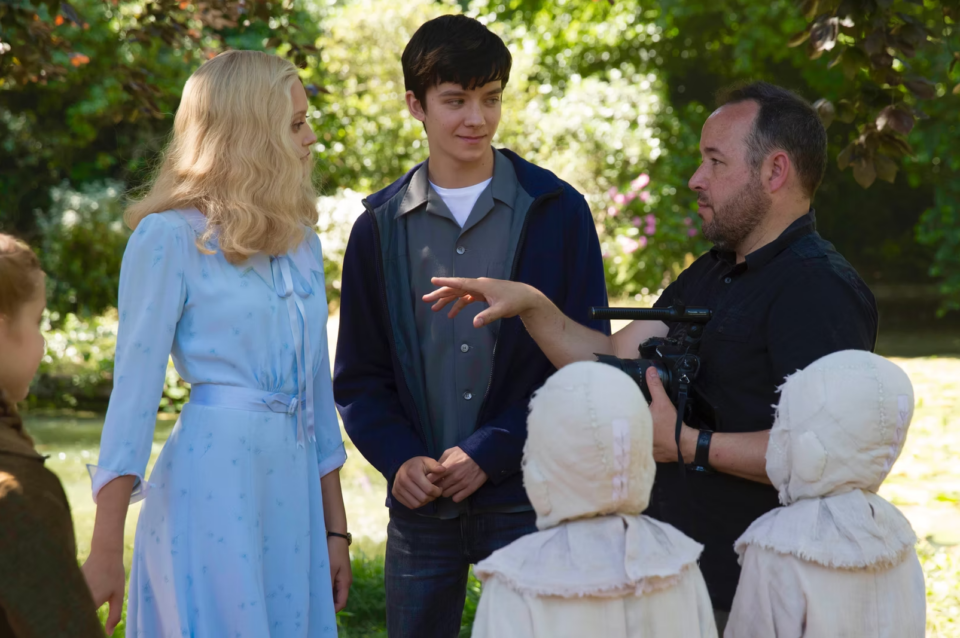
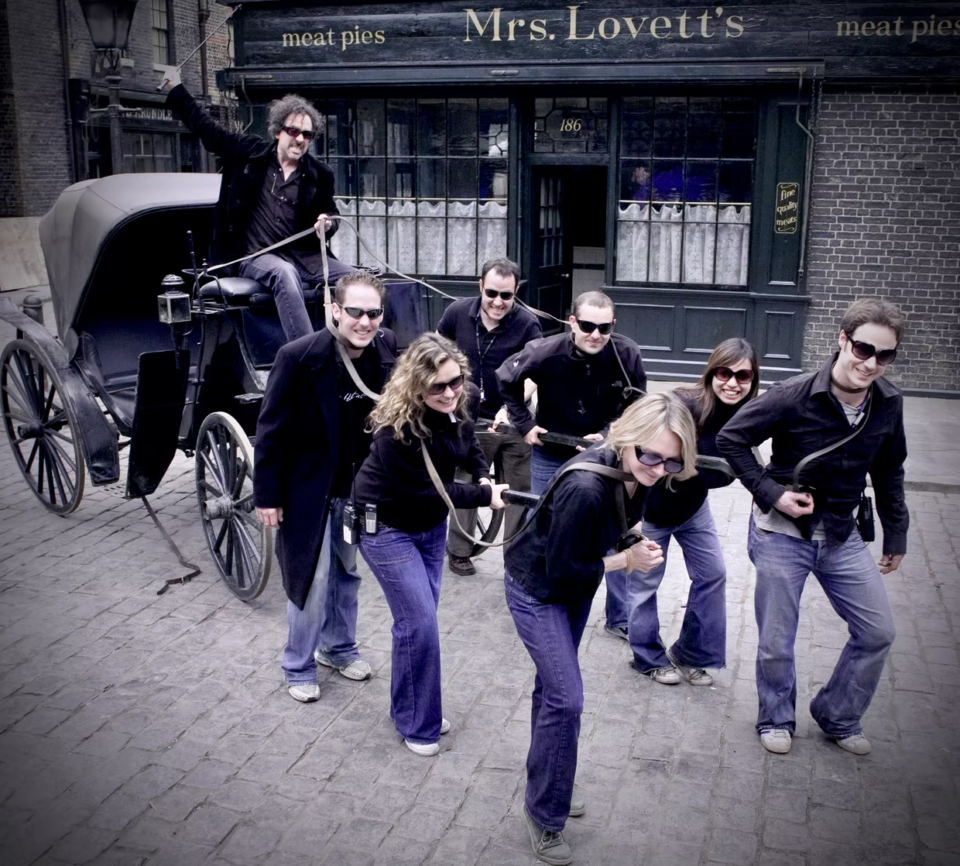
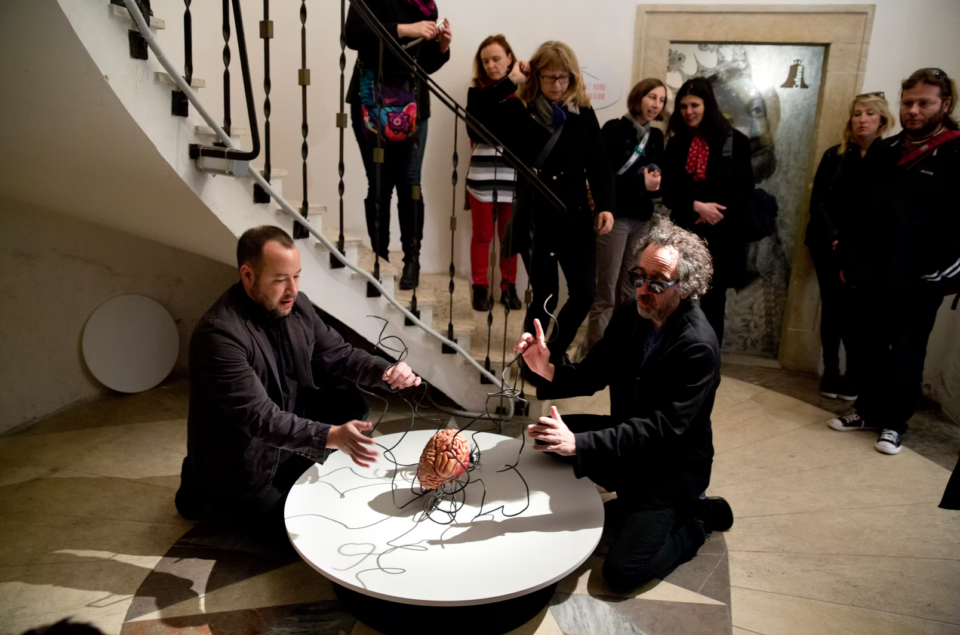
Quelle est la relation qu’entretiennent tes enfants aux films de Tim Burton en sachant que leurs deux parents travaillent avec lui? Est-ce qu’ils aiment ses films autant que toi?
Pour moi, et en ayant travaillé de manière si proche avec Tim depuis tant d’années, ses films font partie de ma vie et les équipes qui ont aidé à la concrétisation de sa vision sont comme ma famille. Donc c’est une toute autre expérience de voir ses films à travers les yeux de mes enfants. Ma femme, Leah, a également été une collaboratrice clé de Tim Burton, capturant les moments magiques des tournages à travers ses photos et écrivant de nombreux livres merveilleux sur ses films. Donc naturellement, notre maison regorge d’images et de souvenirs de ces projets.
C’est vraiment particulier de partager ces films avec nos deux garçons et de voir leurs réactions ; quelles scènes les font réagir et quels personnages les fascinent. Ils adorent tous les deux L’Etrange Noël de Mr Jack depuis tout petit, ils connaissent toutes les paroles des chansons de Danny Elfman. Ils ont regardé Edward aux Mains d’Argent pour la première fois très récemment et mon fils de 6 ans voulait le revoir immédiatement. Ce film m’a particulièrement ému quand j’étais adolescent donc c’est touchant de voir comment ils réagissent. Mon fils aîné, Desmond, a fait un caméo dans Dumbo lorsqu’il avait 4 ans donc il adore particulièrement ce film et raconte à tous ses amis qu’il était dedans. Dumbo était un film très personnel, pas seulement pour Tim mais pour toutes les personnes qui y ont participé. C’est l’histoire d’outsiders qui trouvent leur place dans le monde, ce qui est un thème récurrent chez Burton et qui en fait un film qui touche toutes les générations.
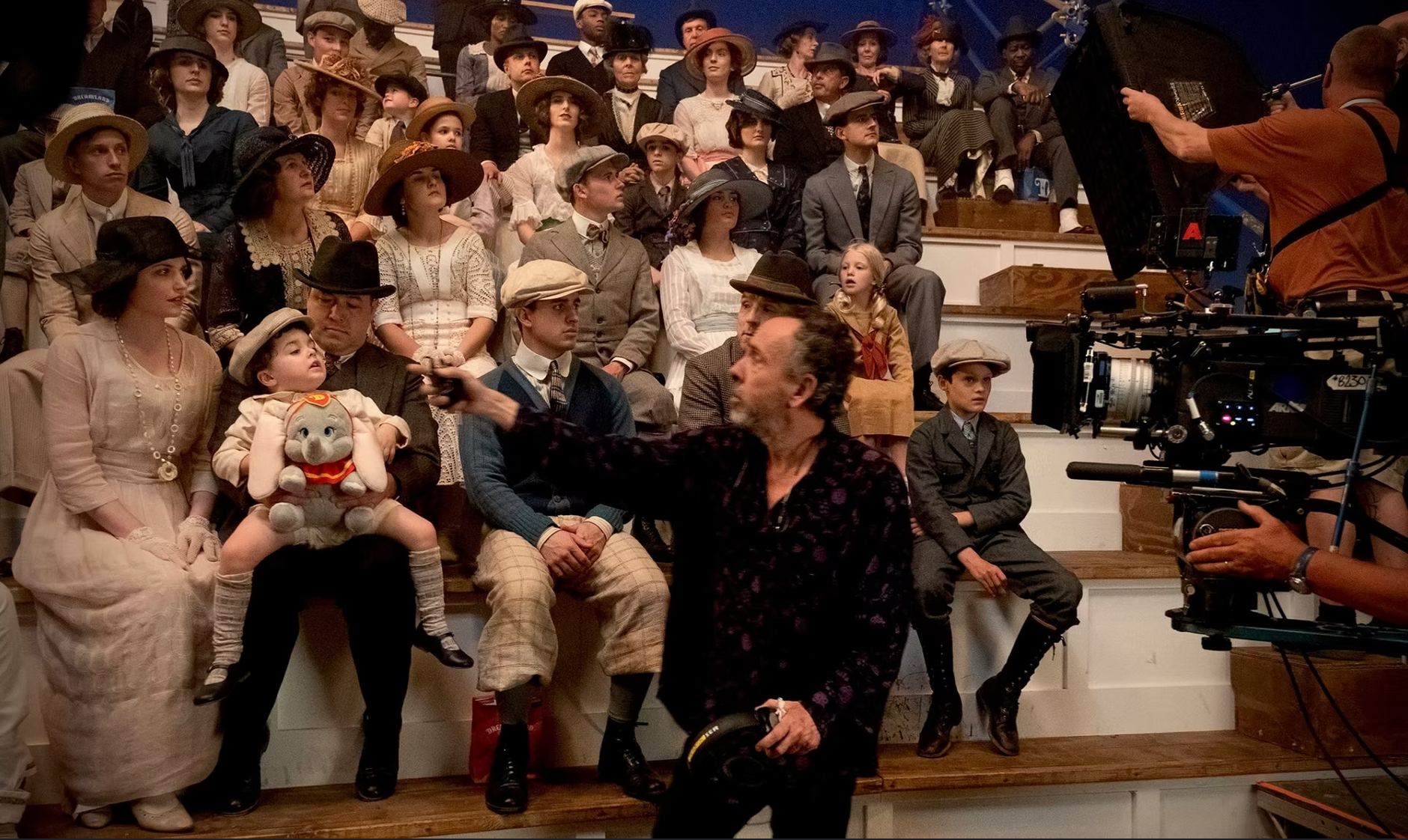
Pour ce qui est de savoir si mes enfants adorent autant ses films que moi, c’est toujours un mystère. Je suis un fan hardcore de ses films depuis que j’ai vu Pee-Wee Big Adventure en 1985. Mes enfants grandissent forcément dans un environnement très Burtonien, ils reconnaissent son style et ses personnages mais je pense qu’ils vont développer leurs propres affinités avec le temps. Bien que ce soit difficile, j’essaie de ne pas trop les gaver au risque de les saouler. C’est la beauté de ces films, ils restent en vous et à mesure que vous grandissez, vous découvrez de nouveaux sens cachés. C’est très excitant de savoir que la prochaine génération est toute aussi enchantée par ces univers que nous le sommes.
Tu as également écrit le court-métrage d’animation Capitaine Sparky Contre les Soucoupes Volantes. Quelle est ta relation avec la stop-motion?
L’animation en stop-motion a toujours eu une place spéciale dans mon cœur. J’ai grandi avec une fascination pour le travail de Rankin/Bass et Ray Harryhausen. La technique d’image par image ne ressemble à aucune autre. La regarder attise des parties de mon cerveau qu’aucun autre médium n’arrive à activer. Il y a quelque chose d’incroyablement magique dans le fait de donner vie à des objets inanimés image par image. C’est l’une des formes les plus pures et méticuleuses du cinéma. J’étais un grand fan de L’Etrange Noël de Mr Jack quand je l’ai vu au cinéma le jour de sa sortie lorsque j’étais encore à l’université. C’est sur Mars Attacks! que j’ai pu toucher à cette technique pour la première fois, lorsque l’idée était d’utiliser la stop-motion pour animer les aliens. Mackinnon & Saunders ont fabriqué les magnifiques figurines des aliens (notre interview de Ian Mackinnon). Nous avons finalement opté pour des images de synthèse qui ressemblent à de la stop-motion pour des raisons de temps et de budget. Les figurines ont par contre été scannées et ont servi de base pour les images de synthèse, c’est pourquoi les effets spéciaux tiennent toujours la route après toutes ces années. Ma première vraie plongée dans l’univers de la stop-motion a été en tant que producteur associé sur Les Noces Funèbres, expérience qui aura duré 8 ans, des premiers développements jusqu’à la sortie en salles. Etre au cœur d’un projet qui demande autant d’organisation, de minutie et de patience (fabrication des figurines, des décors, de la lumière…) m’a apporté un profond respect pour cet art.
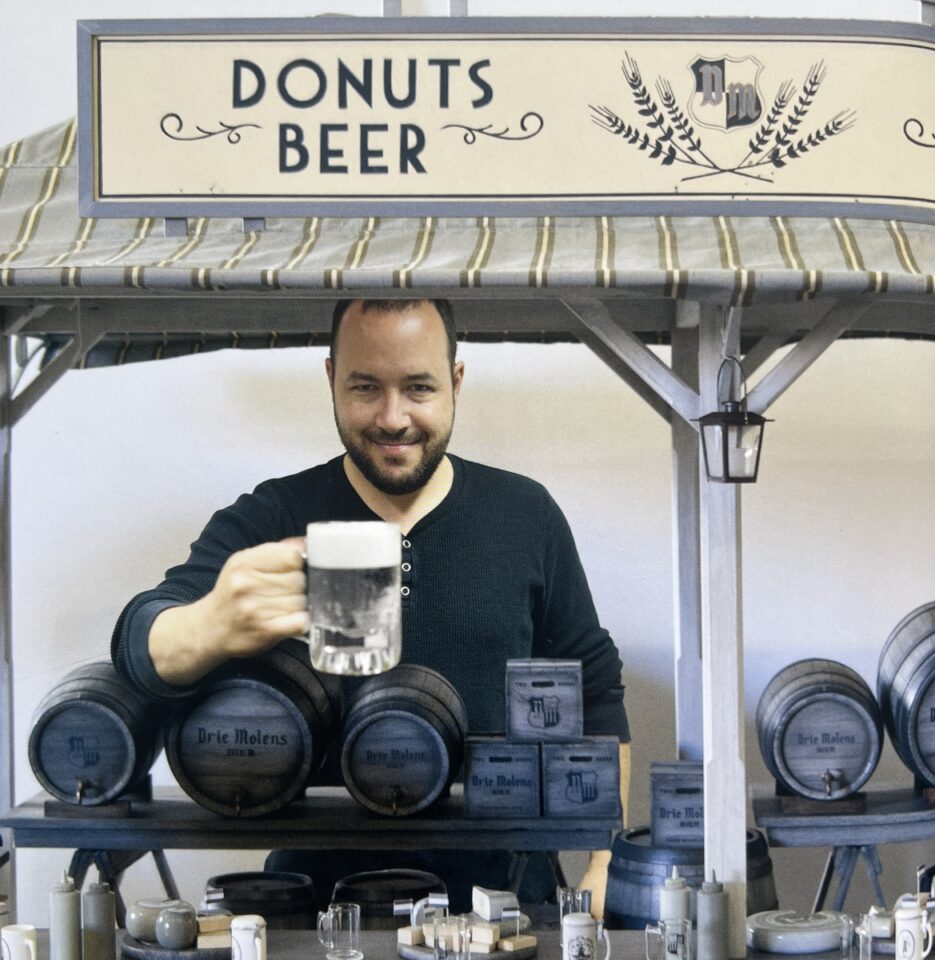
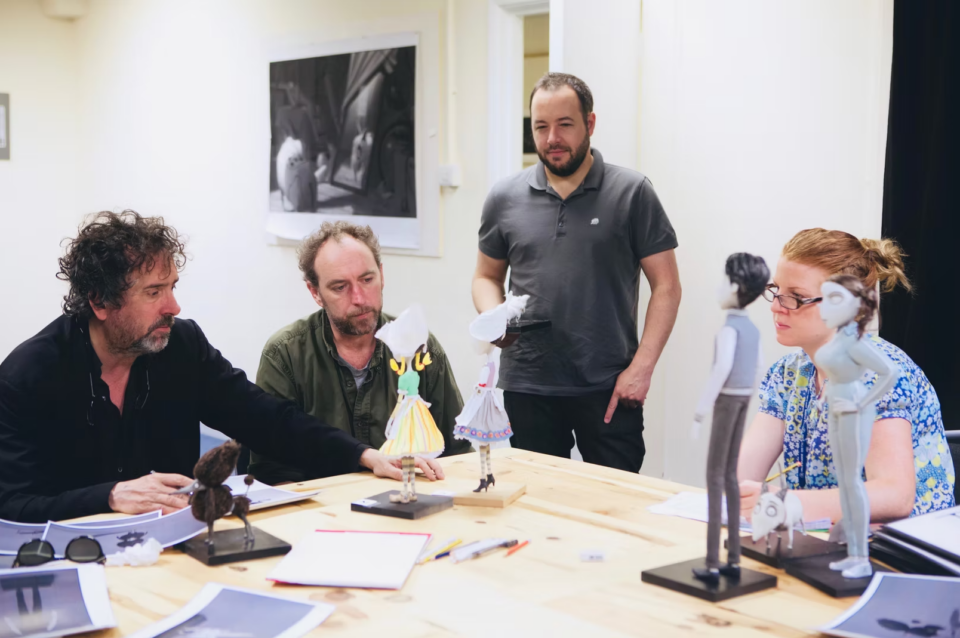
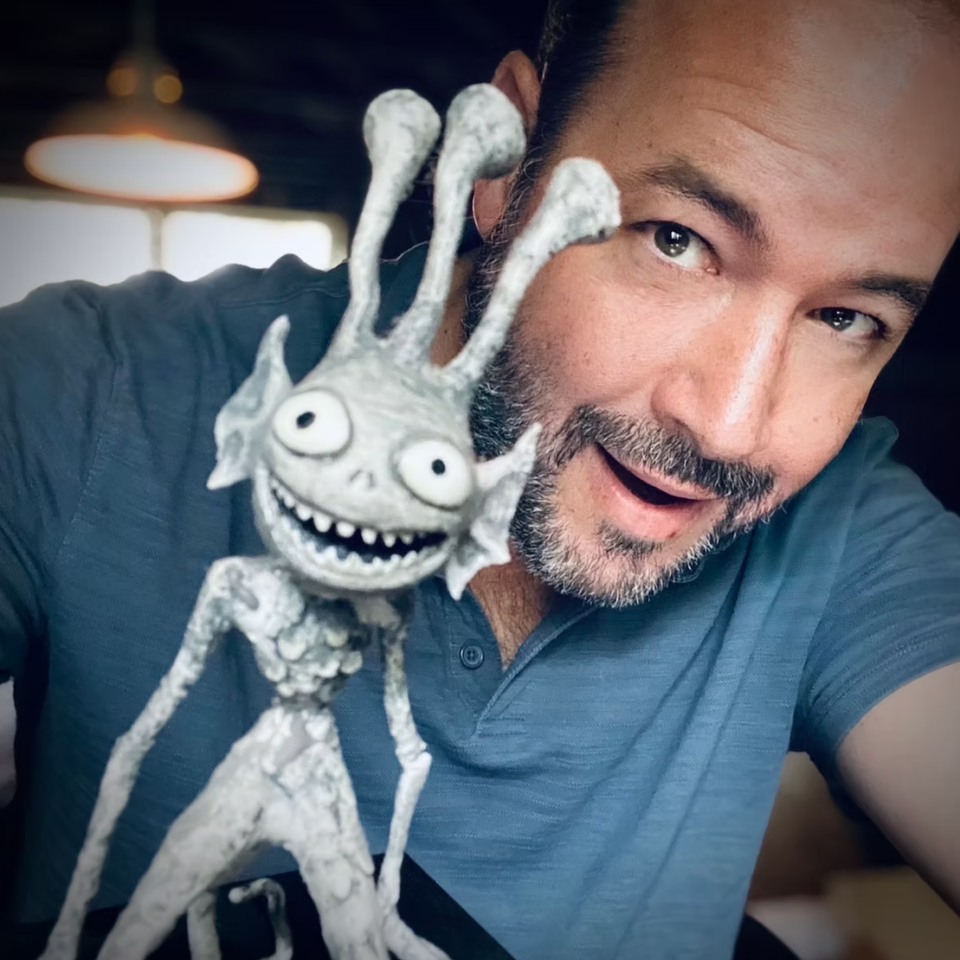
Plus tard, j’ai eu l’opportunité de prendre part au film Frankenweenie en tant que co-producteur, ce qui a accentué ma connexion avec la stop-motion. Ecrire Capitaine Sparky Contre les Soucoupes Volantes était une façon excitante et créative de contribuer à cet univers. C’est un court-métrage qui se déroule dans l’univers de Frankenweenie, une mini-aventure de science-fiction imaginée par le jeune Victor Frankenstein et son chien Sparky. C’était un challenge intéressant de créer quelque chose qui devait être à la fois un hommage aux séries B de science-fiction des années 50 tout en gardant le ton nostalgique et sincère de Frankenweenie.
Ce que j’aime dans cette technique c’est qu’elle a une âme. On peut ressentir la main de l’artiste et de l’animateur derrière chaque plan. Que ce soit l’imperfection d’un mouvement ou la qualité des figurines faites main, il y a une connexion tangible entre le cinéaste et le spectateur. J’ai été chanceux d’être lié à la stop-motion pendant différentes périodes de ma carrière et j’espère continuer à défendre ce médium. C’est un Art qui doit être préservé et célébré.
Quel est ton moment préféré sur un plateau de tournage?
C’est la question la plus difficile, parce qu’il y a eu tellement de moments incroyables sur tous les projets.
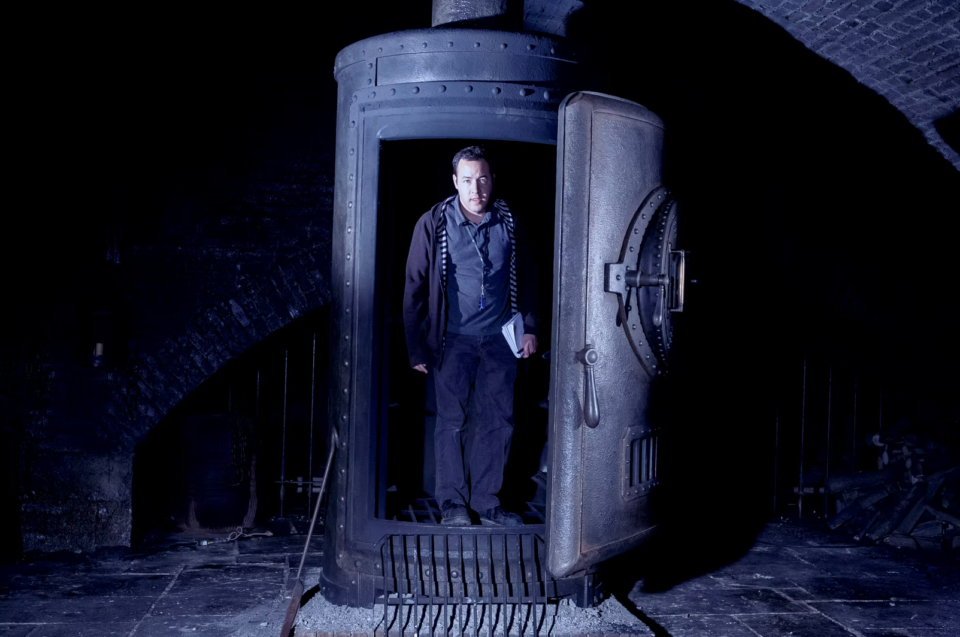
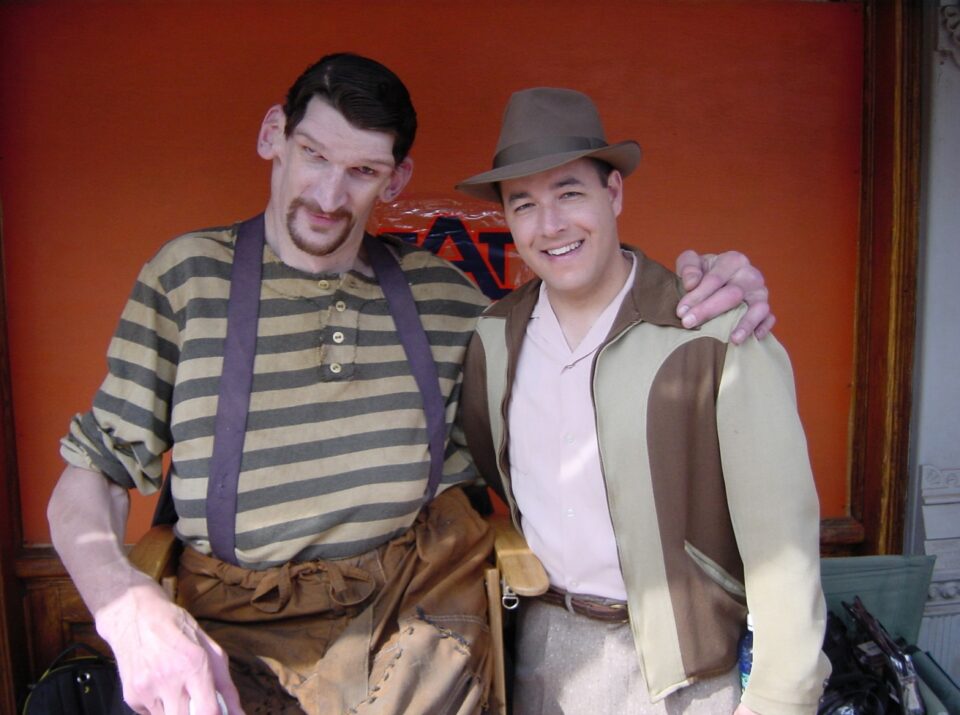
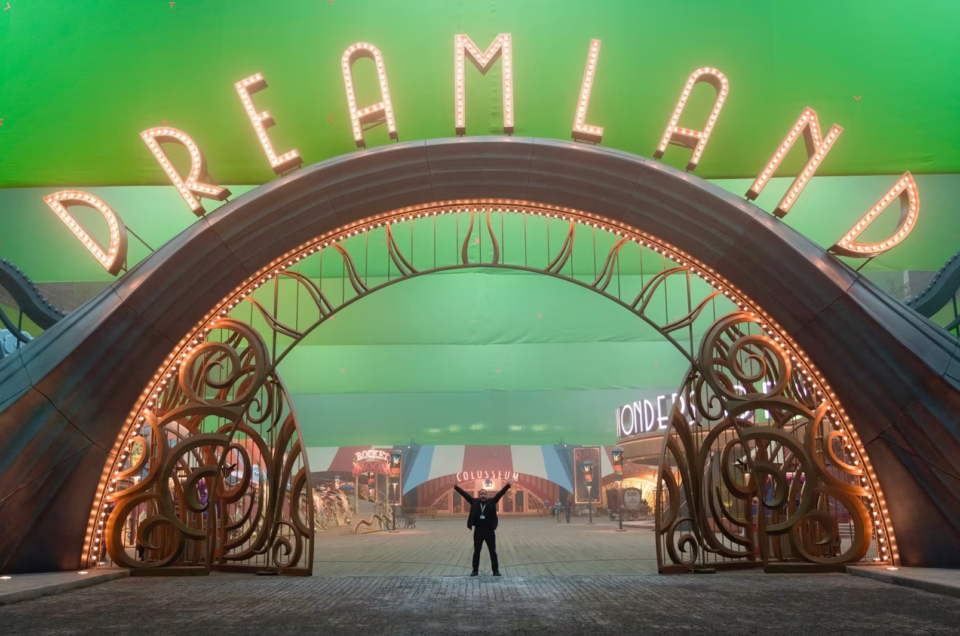
Ma première fois sur un tournage a été inoubliable. C’était une scène du Bureau Ovale dans Mars Attacks! où tous les dirigeants discutaient de l’annonce de l’existence extraterrestre au grand public. Jack Nicholson et Martin Short sont deux de mes acteurs préférés de tous les temps. Donc de les voir jouer dans une même scène avec d’autres légendes telles que Rod Steiger, Paul Winfield et Pierce Brosnan m’a donné des frissons. C’était irréel (Jack Nicholson en tant que Président !!!) et très excitant d’être dans les décors de la Maison Blanche.
Big Fish était aussi particulièrement mémorable pour de nombreuses raisons. Etant assistant de Tim Burton pendant la production, j’ai trouvé que chaque jour avait son lot de nouvelles expériences enrichissantes. En plus j’ai eu un petit caméo dedans ! La narration du film, qui entrelaçait des contes fantastiques avec des moments familiaux dramatiques, a créé une atmosphère sur le tournage qui était à la fois magique et profondément personnelle. Chaque jour était différent avec un nouveau décor incroyable ou des scènes remplies de personnages fantastiques. C’était difficile de faire la différence entre la vie et l’art. Voir la collaboration entre les acteurs et les équipes techniques qui donnaient vie à cette histoire unique était vraiment inspirant. La diversité de décors et de séquences oniriques nous a forcés à être flexibles et inventif, rendant la production aussi captivante que le film lui-même. Big Fish nous a challengé créativement mais a également renforcé le pouvoir de la narration (une leçon qui m’a suivie pendant toute ma carrière).
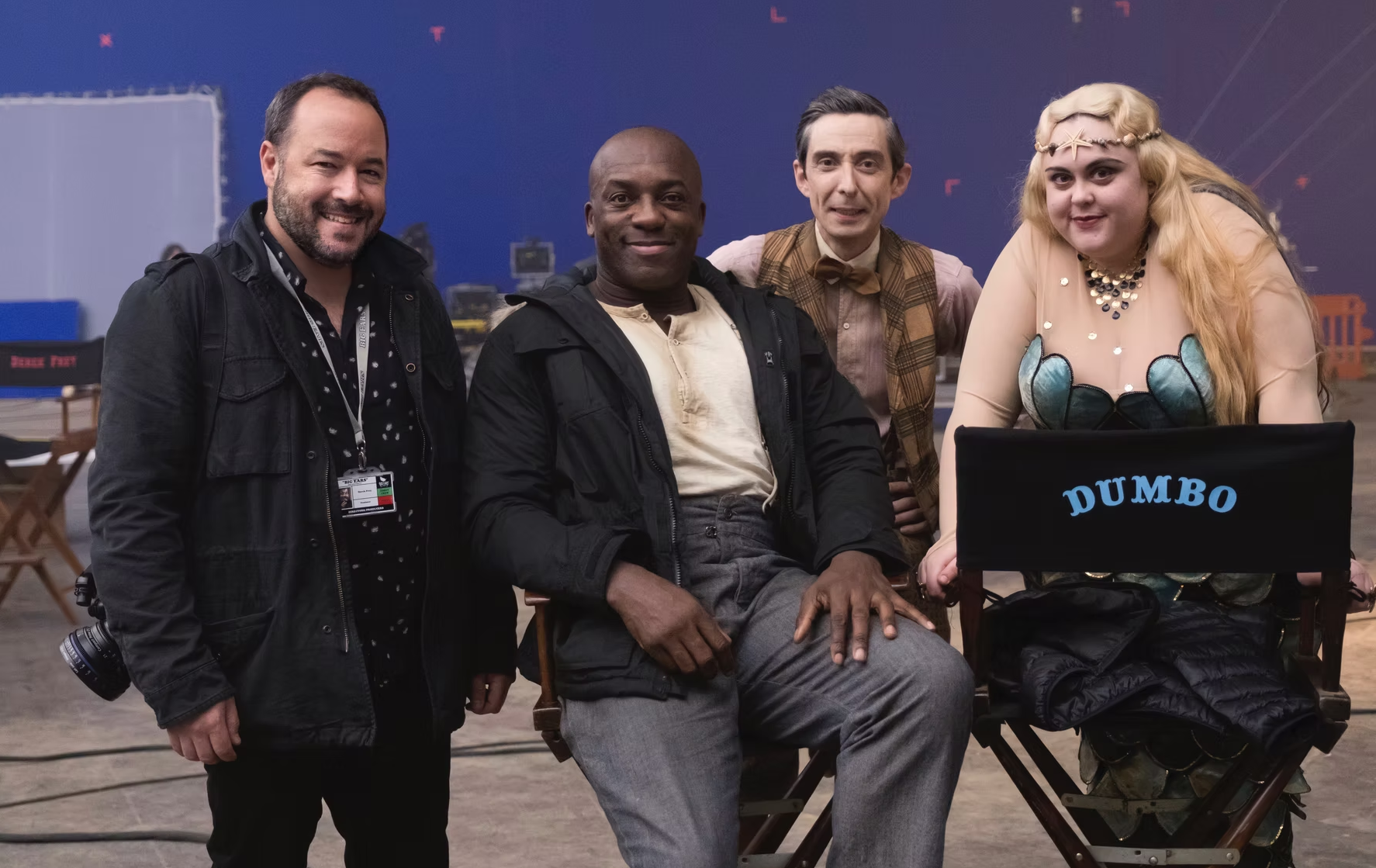
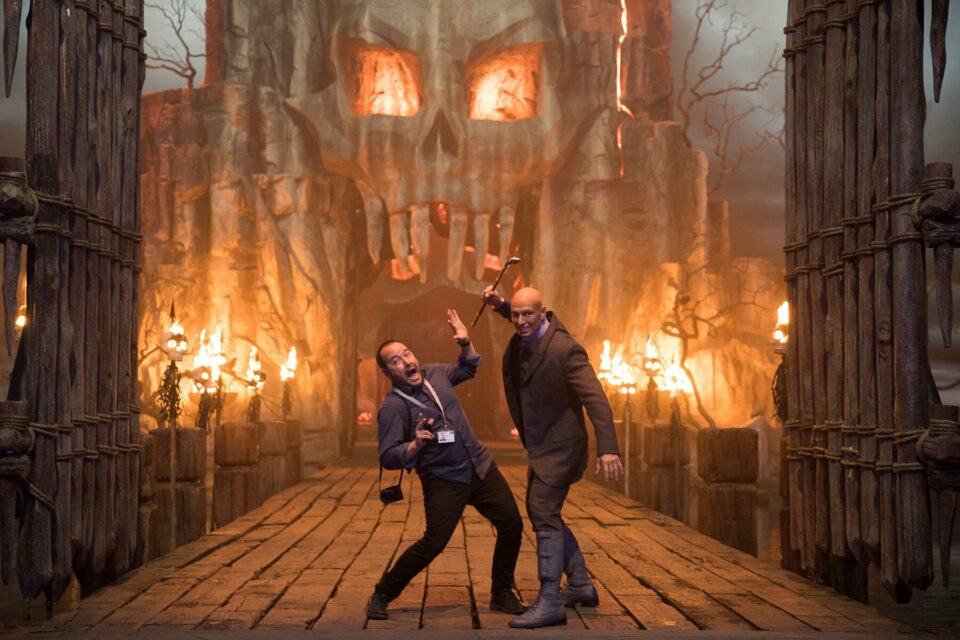
Une autre expérience incroyable était d’avoir travaillé sur Sweeney Todd: Le Diabolique Barbier de Fleet Street. Le mélange de l’intensité des performances, de son côté opéra dark et du challenge de réaliser un musical entier d’époque en a fait une production vraiment unique. Voir Johnny Depp et Helena Bonham Carter incarner leurs personnages tout en délivrant des performances musicales habitées était incroyable. L’ampleur des décors, la cinématographie poussée et l’usage d’un Londres brumeux en fond ont rendu le film très immersif.
Ce qui a rendu Sweeney Todd si puissant était que sous ses airs de film d’horreur gothique, l’histoire était profondément émouvante et personnelle. Ce n’était pas juste du sang et du spectacle, c’était aussi la perte, l’abandon, la revanche et les obsessions morbides, le tout exacerbé par la musique. Faire partie de cette production a été une expérience inoubliable et il reste l’un des films les plus enrichissants sur le plan artistique que j’ai pu faire.
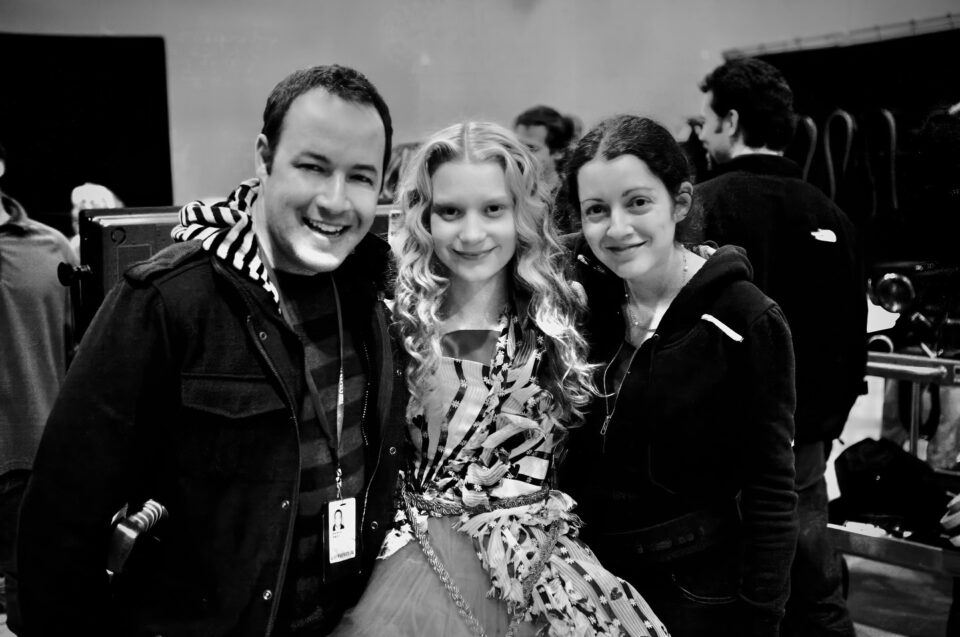
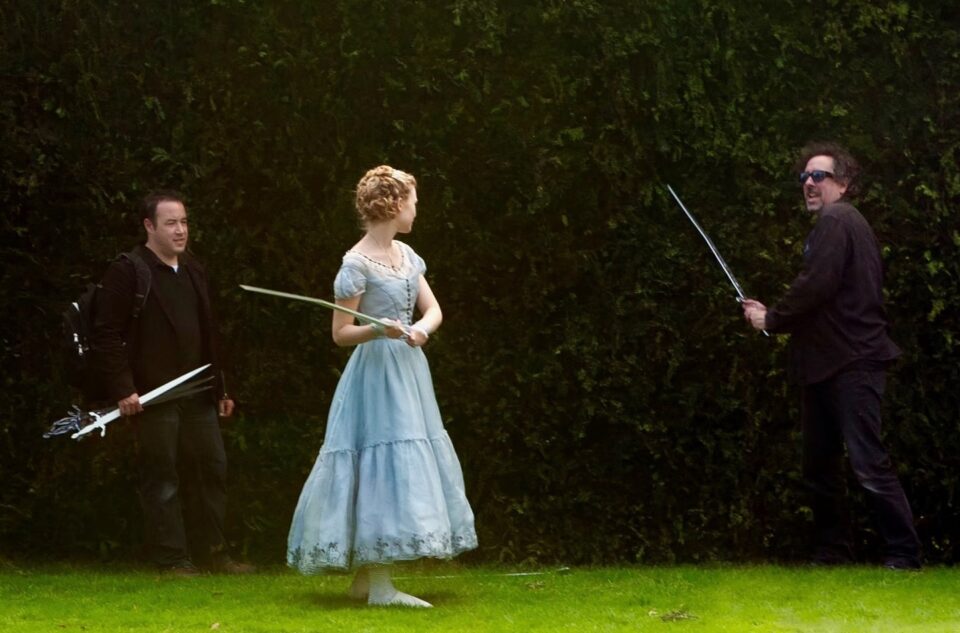
Je dois aussi nommer La Planète des Singes qui a été une expérience incroyable, être entouré d’autant d’acteurs en costumes et maquillages (Paul Giamatti dans son personnage était hilarant devant et derrière la caméra), mais également Alice au Pays des Merveilles avec son casting 4 étoiles qui jouait sur fond vert et Big Eyes pour son côté film indépendant où il fallait se retrousser les manches et y aller ; et enfin Dumbo pour la joie immense de venir tourner dans des décors spectaculaires tous les jours. Et comment oublier l’énergie créative et la liberté que nous avions sur le tournage des clips vidéos “Bones” et “Here With Me” du groupe The Killers. Je pourrais continuer encore et encore !!!!!
Quel film aurais-tu aimé avoir produit?
Voilà une autre question difficile. Je n’irai pas jusqu’à dire que j’aurais voulu produire un ancien film pour ne pas marcher sur les grands cinéastes qui les ont réalisés… mais être une petite souris sur les plateaux de Rencontre du Troisième Type, Sueurs Froides, Les Aventuriers de l’Arche Perdue, Evil Dead 2, The Wicker Man, Aliens, Vol Au-Dessus d’un Nid de Coucou, Edward aux Mains d’Argent ou Docteur Folamour aurait été incroyable !
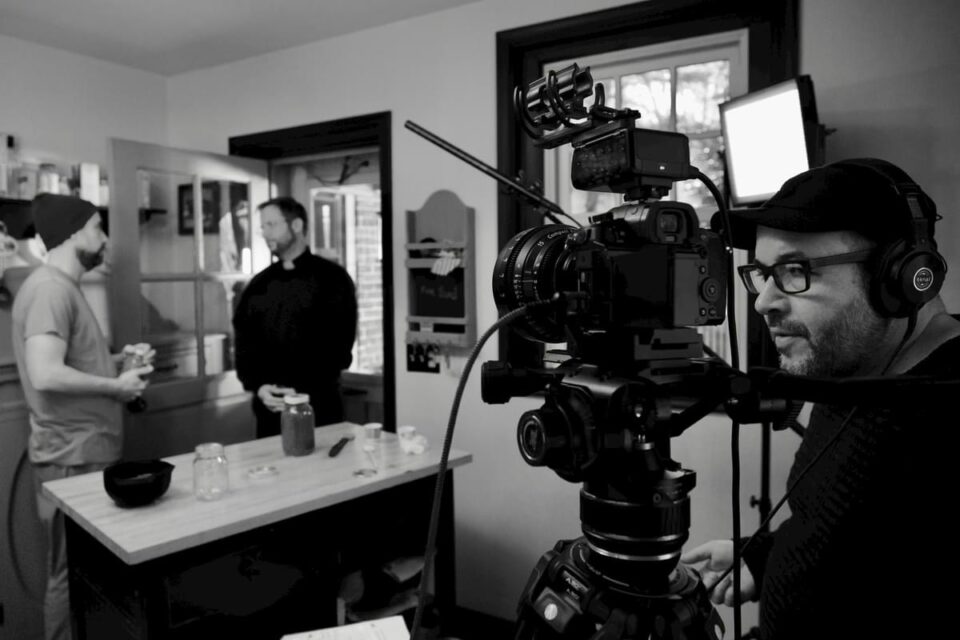
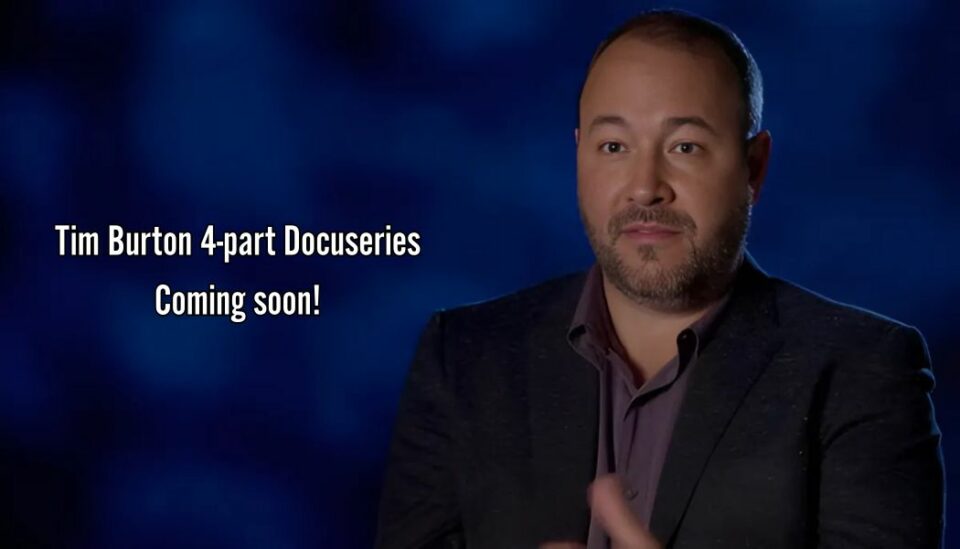
Il y a quelques projets personnels ou sur lesquels je suis impliqué, qui me motivent particulièrement :
- Quiet Fire : l’histoire du lien artistique entre le trompettiste Miles Davis et le pianiste Bill Evans pendant la période d’enregistrement de l’album iconique ” Kind of Blue”.
- The Fissure : lorsqu’un photographe en vacances à Hawaï se perd pendant l’éruption du volcan Kilauea.
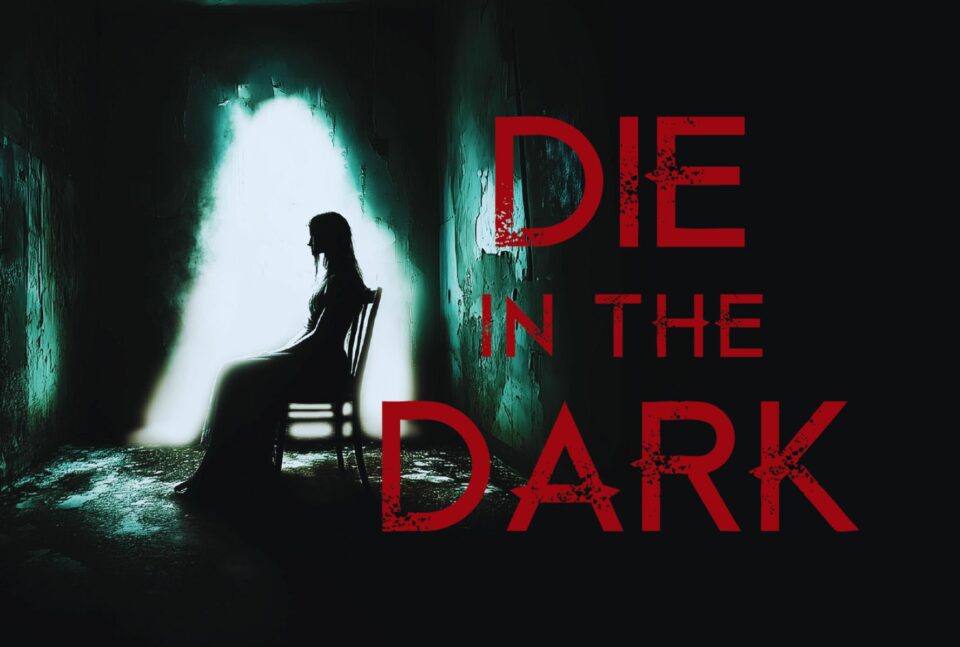
Die in the Dark: un film d’horreur indépendant écrit par le scénariste Michael Greene.
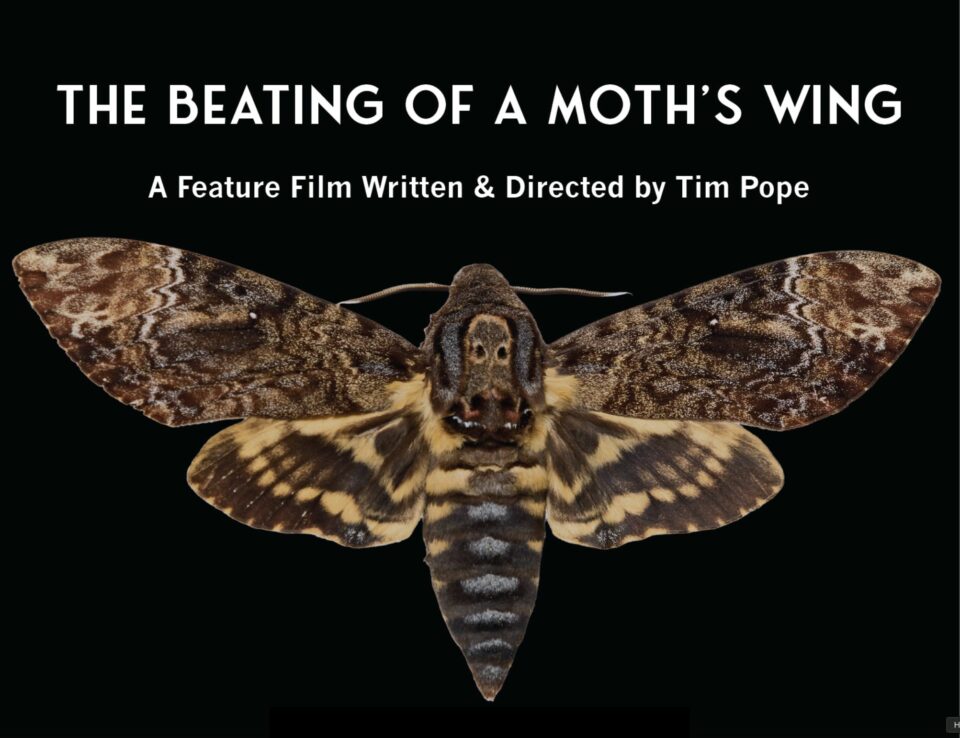
The Beating of a Moth’s Wing: (pour le réalisateur Tim Pope) où les vies d’un Berlinois étudiant de cinéma en difficulté, une mystérieuse sosie de Marilyn Monroe et un ancien flic alcoolique se percutent alors qu’un psychopathe s’échappe d’un hôpital sous haute surveillance.
Un immense merci à Derek pour son enthousiasme contagieux et pour avoir tant partagé avec nous !

English Version
I’m Derek Frey, I’ve had the privilege of collaborating closely with Tim Burton for over two decades, contributing to a range of his projects, from feature live-action and animated films, music videos, publications, commercials and art exhibitions. My journey began as his assistant on Mars Attacks! in 1996, and over the years, I went on to step up into roles of Production Coordinator, Editor, Associate Producer, Co-producer, Executive Producer, and Producer. Some of the notable projects I have been involved in are:
- Mars Attacks! (1996): Assistant to the Director
- Sleepy Hollow (1999): Assistant to the Director
- The World of Stainboy (2001): Production Coordinator
- Planet of the Apes (2001): Assistant to the Director
- Big Fish (2003): Assistant to the Director
- Charlie and the Chocolate Factory (2005): Associate Producer
- Corpse Bride (2005): Associate Producer
- Sweeney Todd: The Demon Barber of Fleet Street (2007): Associate Producer
- The Art of Tim Burton (2009): Editor
- Alice in Wonderland (2010): Associate Producer
- A Conversation with Tim Burton & Danny Elfman (2011): Producer
- Dark Shadows (2012): Associate Producer
- Vampires Kiss/Blood Inside (2012): Director/Producer
- Abraham Lincoln: Vampire Killer (2012): Associate Producer
- Frankenweenie (2012): Co-Producer
- Here With Me (2012): Producer
- Big Eyes (2014): Executive Producer
- Miss Peregrine’s Home for Peculiar Children (2016): Executive Producer
- Dumbo (2019): Producer

How did you meet Tim Burton?
I started working for Tim Burton in 1996 on Mars Attacks! It was a bit of a dream scenario—I had graduated from West Chester University in Pennsylvania in the spring of 1995 and moved to Los Angeles, hoping to break into the film industry. I had a great experience working on a sitcom at the Paramount Studios. That job ended when the show wasn’t renewed for a second season. I was already a HUGE fan of Tim’s work so when I got a call asking if I would be interested in interviewing to work at his company I practically fell out of my chair. I started working as a runner/PA when Mars Attacks! was just about to begin principal photography. It was an amazing experience being thrown into the excitement and pace of making a film of that scale. I learned so much in a very short period of time.
What’s your role in the production of a movie and how did it changed from assistant to producer?
What started as a PA position evolved over the years as I took on more responsibilities and proved myself. I worked my way up through the ranks over many years and projects, from Production Assistant to Assistant to Tim’s assistant, to being Tim’s assistant and then taking on producing roles from Charlie and the Chocolate Factory forward. Early on I had the unique privilege to watch and learn from some great producers like Richard Zanuck, Allison Abbate and Larry Franco. They really showed me the ropes, tasked me with greater responsibilities and most importantly encouraged me. By the time I started taking on producer roles I had a number of projects where working as Tim’s assistant primed me for the next level of responsibility and was the ideal training ground. Being a part of Tim’s creative world has been an incredible experience—he fosters an environment where imagination thrives, and that’s something I’ve always appreciated and been drawn to.
Tim’s process is very organic and instinctual—he’s driven by visuals, emotions, and atmosphere—and my job as a producer is to help facilitate that vision while making sure all the moving parts of a production align. Every film presents different challenges, whether it’s building entire worlds from scratch (Alice in Wonderland, Miss Peregrine’s Home for Peculiar Children), working with stop-motion animation (Corpse Bride, Frankenweenie), or blending live-action with elaborate visual effects (Dumbo).

As a producer, from the early stages, I’m involved in overseeing script development, assembling the right team, budgeting, and working closely with department heads to ensure that what’s imagined can be realized on screen. Once we’re in production, I’m on set every day, making sure things are running smoothly, helping to problem-solve, and maintaining the creative and logistical balance needed to deliver the film as envisioned.


Post-production is another crucial phase where I work alongside Tim and our editors, VFX artists, and the composers to bring everything together. The goal is always to stay true to the essence of what Tim wants to create while keeping the film on schedule and within budget.
What helped make the collaboration work so well is that we have a shorthand after all these years—I understand his sensibilities and priorities, and he trusts me to handle the logistics so he can focus on directing. It’s an exciting and rewarding process, and I’m always inspired by his ability to push boundaries and explore new creative territories with each film.



I feel incredibly fortunate to have started my career in a space that I identified with and felt at home creatively. It was a combination of timing, persistence, hard work and an immense appreciation for Tim’s artistic vision that allowed me to grow within his immense creative space.
What’s the relation between Tim Burton’s movies and your children as they have both parents working with him? Do they enjoy his movies as much as you?
For me, having worked so closely with Tim for many years, the films were an extended part of my life, and the team that helps create his vision are like family. So it’s a different experience seeing the films through my children’s eyes. My wife, Leah, has also been a key collaborator with Tim, capturing the behind-the-scenes magic of his films through her photography and writing a number of wonderful film companion books. So naturally, our home is surrounded by imagery and memories of these projects.
It’s really special to share these films with our boys and see how they react—what scenes they connect with, and what characters they find fascinating. They both adored The Nightmare Before Christmas from a very early age, learning all of the lyrics to Danny’s amazing songs. They watched Edward Scissorhands for the first time recently and my 6 year old wanted to re-watch it immediately. That film really resonated me emotionally as a teenager so it’s very special to see it resonate with them. My oldest son, Desmond, had a cameo in Dumbo when he was 4 years old, so he certainly enjoys that film and telling friends he was in it. Dumbo was such a personal film, not only for Tim but for everyone involved. It’s a story about outsiders finding their place in the world, which is a recurring theme in Tim’s work and something that makes his films so relatable across generations.

As for whether our own kids enjoy his movies as much as I do—that’s still unfolding. I’ve been a die-hard fan of Tim’s work since I saw Pee-Wee’s Big Adventure in 1985. My kids are certainly growing up in a very Burton-esque environment, and they recognize the imagery and characters, but I think they’ll develop their own appreciation over time. Although it’s a challenge, I try hard not to force feed anything too much in the fear that they’ll protest. That’s the beauty of these films; they stay with you, and as you grow, you find new layers of meaning in them. It’s a thrill to know that the next generation is just as enchanted by these worlds as we are.
You also wrote the short animated film Captain Sparky vs The Flying Saucers. What’s your relationship with stop-motion animation?
Stop-motion animation has always had a special place in my heart. I grew up fascinated by the work of Rankin and Bass and Ray Harryhausen. The form of stop-motion is really unlike anything else. Watching it triggers a part of the brain that no other form really engages. There’s something incredibly magical about bringing inanimate objects to life frame by frame—it’s one of the purest and most meticulous forms of filmmaking. I was a big fan of The Nightmare Before Christmas when I first experienced it opening day when I was still in college. My initial first-hand experience with the form was on Mars Attacks! where the original plan was to use stop-motion to animate the aliens. Mackinnon & Saunders built the fabulous Martian puppets (our interview of Ian Mackinnon). We ended up utilizing some early CGI animation which mimicked stop-motion due to time and budget constraints. The puppets however were scanned and served as the basis of the CGI which is why the effects still hold up after all these years. My first deep dive into stop-motion was as an associate producer on Corpse Bride, which from development until release was an 8 year journey. Being part of the immense level of planning, detail and patience required—puppet fabrication, set building, lighting, and the frame-by-frame artistry—gave me a profound appreciation for the craft.



Later, I had the opportunity to be part of Frankenweenie as Co-Producer, which further deepened my connection to stop-motion. Writing Captain Sparky vs. The Flying Saucers was an exciting way to contribute creatively an extension to that world. It’s a short film that exists within the Frankenweenie universe, a playful sci-fi adventure imagined by young Victor Frankenstein and his loyal dog, Sparky. It was a fun challenge to create something that felt like an authentic 1950s B-Sci-Fi movie while still fitting within the nostalgic, heartfelt tone of Frankenweenie.
What I love about stop-motion is that it has an undeniable soul. You can feel the presence of the artists and animators in every frame. Whether it’s the imperfections in movement or the handmade quality of the puppets, there’s a tangible connection between the filmmaker and the audience. I’ve been lucky to be involved in stop-motion at different stages of my career, and I hope to continue championing the medium. It’s an art form that deserves to be preserved and celebrated.
What’s your favorite memory on set?
This is the toughest question, simply because there are countless amazing memories from all of the projects throughout the years.



My first time ever on a film set was a memorable one. It was an Oval Office scene from Mars Attacks! where the leadership discusses announcing the existence of extraterrestrial life to the public. Jack Nicholson and Martin Short are two of my absolute all-time favorites. So to have them playing in the same scene along with screen legends Rod Steiger, Paul Winfield and Pierce Brosnan was a complete thrill. It was so surreal (Jack Nicholson as the President!!!), and the White House sets were exciting to be in.
Big Fish also stands out as a particularly memorable film for a number of reasons. Serving as Tim Burton’s assistant during its production, I found that each day presented a new and enriching experience. Plus, I had a small cameo as well ! The film’s narrative, which intertwines fantastical tales with heartfelt family dynamics, created an atmosphere on set that was both magical and deeply personal. Each day were on a different fantastical set or setting populated by surreal characters. It was difficult to differentiate the line between art and life. Witnessing the collaboration between the cast and crew as they brought this unique story to life was truly inspiring. The diverse settings and imaginative sequences required us to be adaptable and inventive, making the production process as captivating as the film itself. Big Fish not only challenged us creatively but also reinforced the power of storytelling—a lesson that has stayed with me throughout my career.


Another unforgettable experience was working on Sweeney Todd: The Demon Barber of Fleet Street. The combination of its darkly operatic tone, the intensity of the performances, and the challenge of making a full-scale musical with a period aesthetic made it a truly unique production. Seeing Johnny Depp and Helena Bonham Carter fully embody their roles while delivering haunting musical performances was incredible. The set design, the rich cinematography, and the atmospheric use of London as a backdrop all added to the film’s immersive quality.
What made Sweeney Todd so powerful was how deeply moving and emotional the story was beneath its gothic horror exterior. It wasn’t just about the blood and the spectacle—it was about loss, revenge, and tragic obsession, all heightened through the music. Being part of that production was an unforgettable experience, and it remains one of the most artistically rewarding films I’ve worked on.


I have to give shoutouts to Planet of the Apes for being just an amazing experience to be on set surrounded by a cast in full makeup and costume (Paul Giamatti in makeup was hilarious on and off camera), as well Alice in Wonderland for the brilliant cast performing on green screen sets and Big Eyes for its indie, roll up your sleeves and make it energy and Dumbo for its sheer grandness and spectacle of coming to the sets each day. And I can’t forget the creative energy and freedom when we made the music videos “Bones” and “Here with Me” for The Killers. I could go on and on !!!!!
What movie would you have loved to produce?
That is another difficult question. Well I won’t go as far to say I would have loved to have produced any particular film from the past, as to not tread on the great filmmakers that made them – but to have been a fly on the wall of Close Encounters of the Third Kind, Vertigo, Raiders of the Lost Ark, Evil Dead 2, The Wicker Man, Aliens, One Flew Over the Cuckoo’s Nest, Edward Scissorhands or Doctor Strangelove certainly would have been a thrill!


There are a number of projects of my own or that I’m involved with that I’m excited to make:
- Quiet Fire: Which tells the story of the creative bond between trumpeter Miles Davis and pianist Bill Evans, around the time of recording sessions for the iconic album Kind of Blue.
- The Fissure: Where a photographer on vacation in Hawaii loses himself during an eruption of the Kilauea volcano.

Die in the Dark: An indie-horror written by screenwriter Michael Greene.

The Beating of a Moth’s Wing: (For director Tim Pope) Where the lives of a troubled Berlin film student, a mysterious Marilyn Monroe impersonator, and an alcoholic ex-cop collide when a cunning psychopath escapes a high-security mental hospital.


